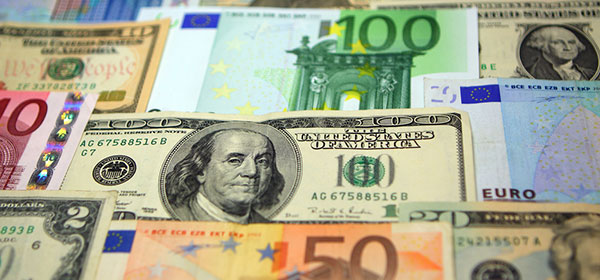Emelda is heading off to the UK and Europe, where she’ll visit a few countries that use different currency. She’s asked SJ about the best way to buy currency.
Q. Emelda
I’m visiting some family and friends in Europe and the UK next year, and I’ll need some different types of currency. I’ve only ever been to the US, and needed just one different currency. Can you give me some general tips about buying currency?
A. Despite having travelled more than most people I often find myself still confused when it comes to how best to manage foreign currency. When should you transfer money? Should you withdraw it beforehand? Is it best to pay in your home currency or the local one when given the option?
The easiest answer here is that it pays to do your research. At least a month out from your trip, start watching currency movements. The ideal time to buy is when the rate is climbing and the AUD is the strongest – when you get the most euros, dollars, pounds or other currency for your dollar.
While it can be hard to predict this, watching the daily exchange rates on a money converter site such as Xe will help you understand what makes a good exchange rate. There are also forecasting sites that can help to help you judge whether the value of the AUD is likely to rise or fall before you travel.
As with everything, buying currency in advance can be a bit of a gamble. You may find that the day after you buy it, the rate continues to climb. One thing is for sure though, it is much better to be prepared and have bought at least some foreign currency in advance. You will need foreign currency when you arrive at your destination and, unlike in your home city where you have the ability to shop around, airports rarely offer good exchange rates as they know they have a monopoly and customers are usually desperate.
Make sure you also check among the various providers as, like with most industries, prices are not the same across the board. Phone around and ask for rates so you can guarantee getting the best exchange rate and paying the lowest amount of commission.
It’s worth being aware that exchange rates are not set in stone, either. If you are exchanging a large amount of cash, there’s no harm in asking for a discount – the worst that will happen is they will say no and you’ll be in the same position you started in. The same applies when you’ve seen a better rate elsewhere – most providers will offer to match this in order to still get your business.
Avoid travelling with huge wads of cash by making the most of travel money cards. Make sure you shop around for these as well, though, and choose one with low or no foreign transaction fees. Pre-paid cards have the added bonus of travel money being locked at the exchange rate on the day you transfer money to the card. So again, be aware of this and make sure you transfer it across at a good rate so you don’t lose out.
And, when it comes to the million dollar question of whether you want to pay in AUD or foreign currency, the safest option is to pay in the local currency. This will avoid what is known as ‘dynamic currency conversion rate’ where businesses apply a fee to convert your purchase into AUD. Same goes for ATMs – unless you are certain the conversion rate they are offering is much worse than what your bank is currently showing – you would do better to accept the exchange rate displayed and lock this in. Your bank may not process or convert the transaction at that exact moment, meaning you may end up with a worse conversion than if you’d accepted and locked in the one offered.
Do you have any practical tips when it comes to managing money overseas?
If you have a Travel SOS question, simply email [email protected] and we’ll do our best to answer!

